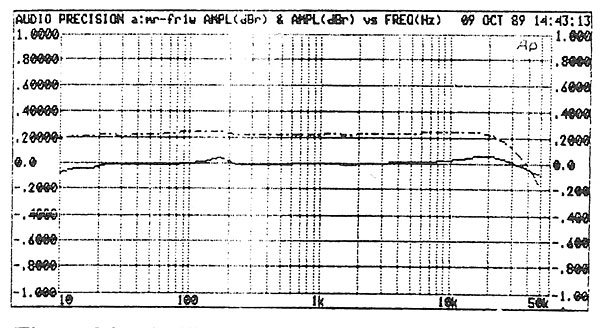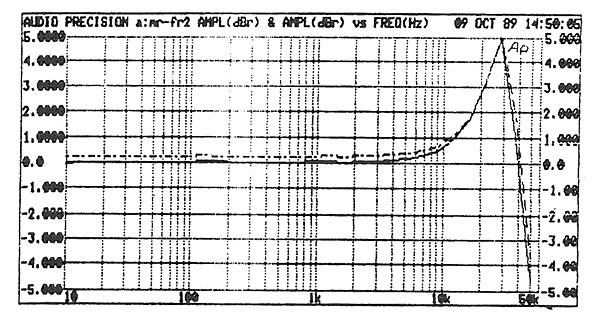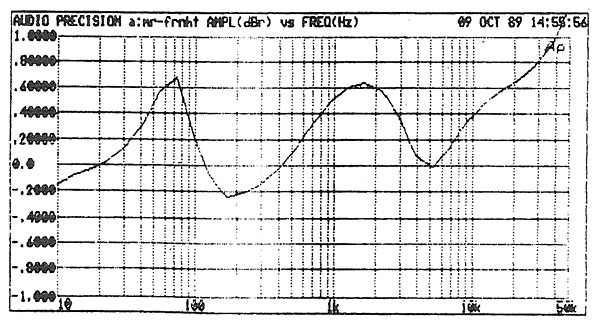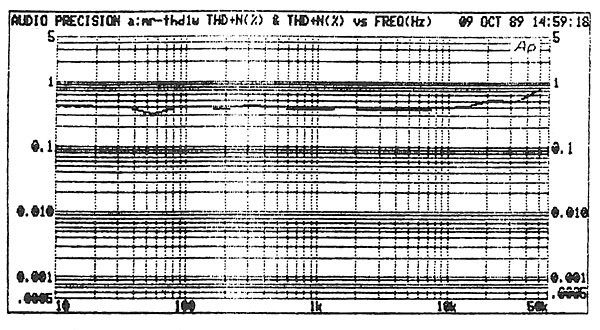| Columns Retired Columns & Blogs |
Music Reference RM-9 power amplifier Measurements
Sidebar 1: Measurements
On the test bench, the Music Reference RM-9 exhibited a flat frequency response when driving an 8 ohm resistive load at 1W, as shown in fig.1. The right channel's output (dotted trace) was about 0.2dB higher than the left's. Adding 2.2µF of capacitance in parallel with the load resistor produced the trace in fig.2. Note the rising HF response and change in scale from 0.2dB per division to 1dB per division. Fig.3 shows the RM-9's frequency response driving a simulated 20-liter, sealed two-way loudspeaker. (Our thanks to Kenneth Kantor of NHT for supplying us with this simulated loudspeaker load.)

Fig.1 Music Reference RM-9, frequency response at 1W into 8 ohms (right channel dotted, 0.2dB/vertical div.).

Fig.2 Music Reference RM-9, frequency response at 1W into 8 ohms in patallel with 2.2µF (right channel dotted, 1dB/vertical div.).

Fig.3 Music Reference RM-9, frequency response at 1W into simulated 20-liter, sealed-box, two-way loudspeaker (0.2dB/vertical div.).
The RM-9 clipped at 103.5W into 8 ohms (20.15dBW), 102.9W into 4 ohms (20.12dBW), and 96.2W into 2 ohms (19.8dBW), measured at the 8, 4, and 2 ohm taps respectively. Output impedance was 0.3 ohm, a moderate value for a tube amplifier. THD and noise as a function of frequency, shown in fig. 4, were less than 0.5% within the audio band. All measurements were made with KT88 output tubes.—Robert Harley

Fig.4 Music Reference RM-9, THD+noise (%) vs frequency at 1W into 8 ohms.
- Log in or register to post comments



































